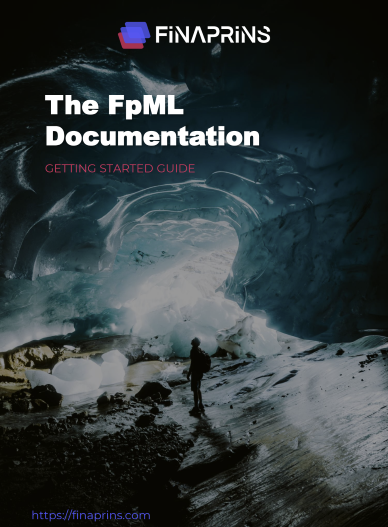Introduction
Welcome to the seventh part of our series on the introduction to FpML documentation. In this article, we will let you download our FpML Documentation Guidebook, which contains all the information from the previous parts of our guide, which were published on our blog.
FpML Documentation Guide Series
What are the FpML advantages?
The financial industry is complex, and the products and instruments it uses can be difficult to understand and manage. This is where FpML, or Financial Products Markup Language, comes in. FpML is an XML-based standard used in the financial industry to describe financial instruments, including derivatives, securities, and loans.
Implementing FpML can bring a lot of benefits. The use of FpML can help improve efficiency, accuracy, transparency, and standardization in the financial industry, which can lead to better risk management, more informed decision-making, and more efficient use of resources. Standardization has been proven in various industries to be beneficial in reducing costs, minimizing errors, and promoting innovation. With the FpML, the financial industry can standardize their products, processes, and data to improve their performance and service to customers, as well as comply with regulatory requirements
Implementing the FpML – what are the challenges?
However, using the FpML brings also challenges. FpML is designed to represent complex financial products and transactions. As a result, it has a large and complex data model, which can be challenging to implement and maintain. Implementing FpML requires expertise in XML schema design and development, as well as familiarity with financial products and their associated business processes. This can make it difficult for organizations without sufficient technical expertise to implement FpML. Financial organizations often have legacy systems that do not support FpML. Integrating FpML with these systems can be challenging and may require significant modifications to existing systems.
The FpML Documentation Guidebook
In the last part of our guide to FpML documentation, we have prepared an eBook for you, thanks to which it will be a little easier for you to overcome the challenges related to FpML, and you will enjoy the benefits of using the standard faster. The eBook contains all the information from the previous parts of our guide, which were published on our blog. With it, you will find a summary of useful links, information on where to download the documentation, how to read it, and how to visualize dependencies between FpML elements.
Download the FpML Documentation Guidebook
Make the FpML adoption faster and easier
By submitting this form, you agree that Finaprins may contact you occasionally via email to make you aware of Finaprins products and services. You may withdraw your consent at any time. For more details see the Finaprins Privacy Policy.




2 comments